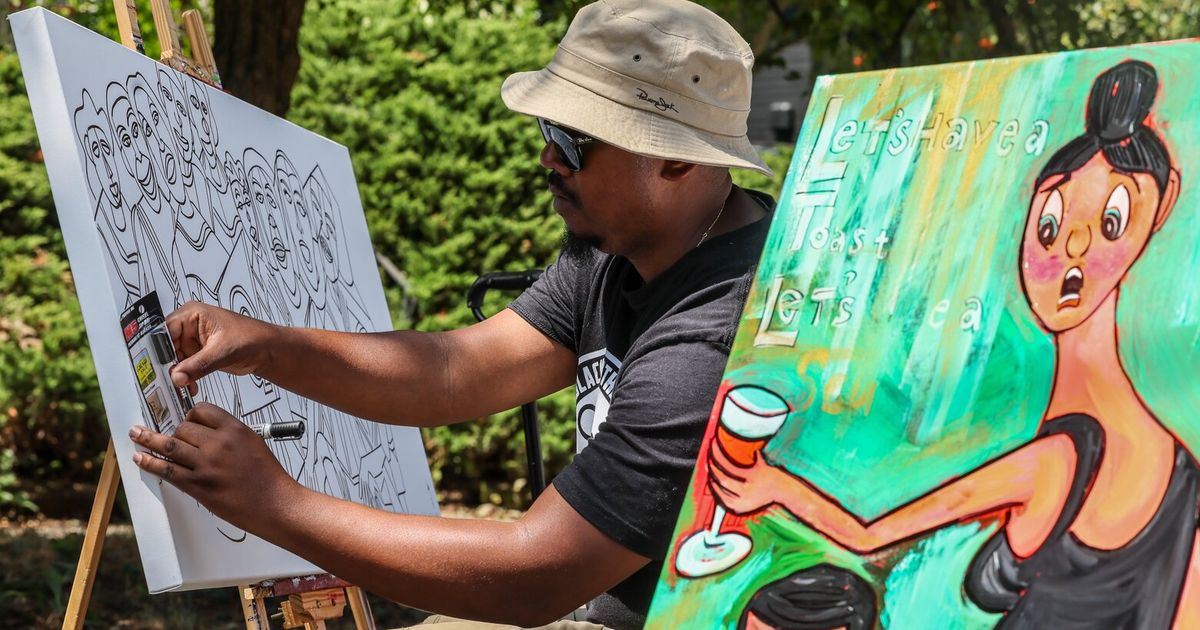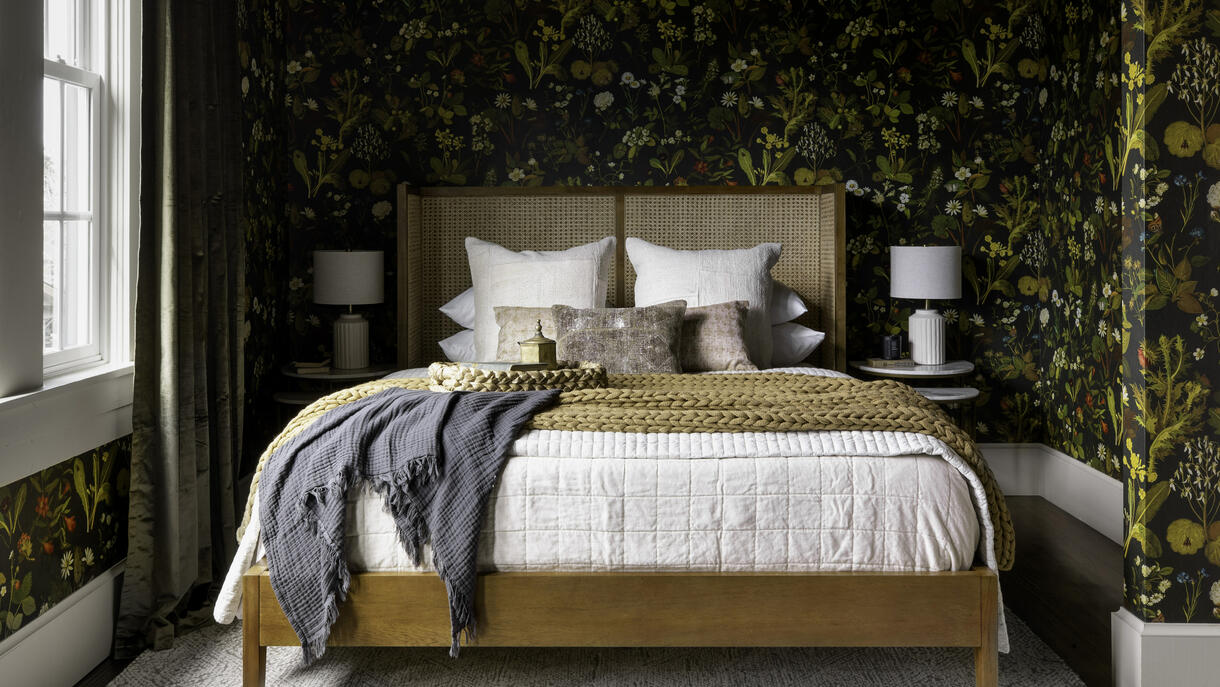Why Seattle is viewing far more men and women of colour-centric arts and crafts marketplaces
9 min read
Table of Contents
The Saturday sun defeat down on Cre Claytor as she stood at a booth together 20th Avenue in the Central District. She presented up samples of cannabis-infused popcorn and chatted about the honey she sells, produced by bees in her yard. Nearby, a man sketched faces on canvas with decisive pen strokes. A vendor marketing system-shaped candles exclaimed yet again and once more how significantly she enjoys marketplaces like this.
As buyers perused the choices up and down the road, Claytor explained Guides, Bites, n’ Beats, a block celebration/competition, “feels like property.” To her, the new pageant celebrating Black lifestyle, which took area July 29 and 30, represents a improve in the possibilities accessible to sellers of coloration who promote at regional craft markets.
“This summer months has been a person like none other in conditions of opportunities for people like us,” Claytor reported. “It’s been incredible, nearly mind-boggling.”
In modern many years, area sellers and craft market place organizers say they’ve found far more and more marketplaces run by and designed for folks of colour pop up all-around the Seattle location, from Of course, Ma! Evening Current market in Beacon Hill to the Black Night Sector in Tacoma. These markets — in which smaller organization entrepreneurs often provide arts and crafts items like pottery, paintings and jewellery — give community as effectively as option for suppliers who do not always experience welcome elsewhere.
Neighborhood markets frequently fall short to be consultant of Seattle’s range, according to Mari Griffin, the founder and operator of the recurring Black Night Current market. Griffin reported she’s been to various where by only 2-4% of suppliers are Black.
In her eyes, men and women of coloration-centric marketplaces present opportunities for distributors and attendees alike that marginalized communities never constantly acquire. Many have also taken strides to make vending more available by lessening or getting rid of seller charges. Those costs — dollars that distributors fork out to promote at a supplied market — generally go toward promoting, leasing room for the current market, compensation for organizers and extra.
But funding the marketplaces stays an problem for some organizers. So now, organizers are experimenting with distinct strategies, from grants to group fundraising, to make their marketplaces viable.
Producing place for group
By drop 2021, Jennifer Liu experienced heard the considerations once more and once more: “I was the only man or woman of color” at a industry, a good friend may possibly say. “It appeared like the organizers talked to every person but me.”
Then came a breaking position: She noticed nevertheless an additional community market announce a lineup with out many distributors of color. Liu considered, “Why really do not we have other markets?” Then she resolved, “I could do it.”
In a lot less than two months, she threw alongside one another the first Rain Or Shine Community Industry in October 2021, making a room in Phinney Ridge that explicitly prioritizes people today of shade and lessens the seller rate to reduce obstacles to entry. Given that then, Liu’s noticed extra and extra men and women get started their individual markets too.
“These significant high priced marketplaces that applied to be the only factor out there — that’s like $400 [in vendor fees], and genuinely tough to get into, even if you could afford to pay for it,” Liu reported. “And so I assume folks are just taking matters into their individual arms and making an attempt to generate what they want to see.”
Quite a few consumers have develop into additional cognizant of exactly where they shell out their cash pursuing the Black Life Subject protests in 2020, Liu and other organizers reported. Specifically as men and women moved out of pandemic restrictions, they are “engaging with scaled-down vendors, … men and women of color, LGBTQIA+ owned,” according to Seattle College professor James Miles, whose areas of know-how include things like art and artwork training.
Outside of economic opportunity, fairs centered on communities of shade also provide anything a lot less tangible: a feeling of protection and camaraderie. That was usually the objective for Renata Bryant and Mattie Mooney, two of the co-founders of Getting B(l)ack Pride, an yearly competition with a seller industry meant for queer and trans Black and Indigenous individuals, as very well as other people of coloration.
“This is a position exactly where you never have to code swap, and you really do not have to look more than your shoulder for who’s watching,” Mooney said. “And you never have to come to feel like you have to show up in any other way but authentically, for the reason that the place is really meant for you.”
As people today of color-centric marketplaces proliferate, some organizers are inspiring others. For instance, Sam Mejia — the artist behind The LadyWookiee Shop — marketed pottery, earrings, journals, totebags and zines at Rain Or Glow in Could. Liu and other current market-arranging close friends gave them the braveness to begin the repeating Accessibility for All Artists Sector in Tacoma, a house for disabled sellers.
Marketplaces like these can provide as a stepping stone for marginalized and newer suppliers, Mejia reported, particularly due to the fact they usually demand reduced vendor fees. At founded craft marketplaces in Seattle, individuals service fees can rise higher than $400 (even though markets like City Craft Rebellion, just one of the greatest in the place, do supply scholarships for some suppliers).
“My limit tends to be about like $75 for how substantially I’m in a position to pay out for a seller fee, and I know that which is absolutely on the reduce side of what most persons spend,” Mejia mentioned. “But realistically with where I am … I can’t truly demand much more, so I can’t justify paying out additional.”
And when markets set their vendor charges reduced, regional potter Ryan Allen McDonald pointed out, artists could also be in a position to established charges reduce — earning the experience much more cost-effective all all-around.
Seeking for sustainability
But reduced vendor charges are not often quick for organizers to set or retain.
Gracie Santos Guce faced that concern the very first time she hosted The Palengke National, a Filipino-centric market, with co-founder Jennifer Marie Johnson. They began by location the vendor fee for the June 2022 Rainier Beach front market low: $25. But with such confined earnings, they finished up shelling out for T-shirts, marketing and more out of pocket.
So when Guce and Johnson began arranging the upcoming Palengke that tumble, they set the price tag greater: $150. Although Guce thinks the alter may well have chilled the amount of vendors who use to the ongoing sector, she also mentioned the types who do participate typically complete effectively.
Guce and Johnson, like numerous smaller market place organizers, began Palengke by identifying a place to host and then reaching out to distributors they understood. (Organizers also commonly set a vendor software on line and do a social media callout.) Although some groups like Indeed, Ma! Night time Industry are fiscally sponsored by nonprofits, that means the sponsor can settle for donations and grants on behalf of the market place, a lot of depend on vendor service fees.
Griffin, the Black Night Current market operator, operates marketplaces entire-time. An seasoned organizer, she explained she typically fees vendors $135 (or $125 if they have business licenses) — income that goes toward costs like reserving a venue, having to pay performers and compensation for her very own operate. She does not normally gain from BNM.
But amongst arranging her personal marketplaces and featuring services to other businesses and festivals, the model is sustainable plenty of, she mentioned: “I’m in a position to stay off of … the work that I do.”
That’s not always the case for organizers. Ellise Uyema and Kaining Wang, co-chairs of the common Makers Artwork Market place in West Seattle, stated their $90 seller fee — with payment programs and a scholarship available to make participation far more accessible — just hardly addresses the location rental. Stretched slim, Uyema mentioned they are taking a brief crack at the moment.
Furthermore, Liu at Rain Or Glow has faced funding problems. When the current market ended up quick on resources, she’s turned to the local community for donations. At some issue in the long run, although, Liu claimed she possibly will need to have to make dollars.
Deficiency of compensation affects the “sustainability of generating sure that we can retain going and not melt away out,” she reported.
Even when organizers transform to outside money for their functions, compensation is not often straightforward to appear by. For example, Getting B(l)ack Delight prices about $200,000 a calendar year to make, the founders claimed. They obtain the resources to protect the huge festival and demand suppliers nothing, but the organizers themselves are hardly ever compensated for the operate they do.
“We are the last to get paid if there’s any income left above,” Mooney explained. “Oftentimes, there isn’t a lot.”
Experimenting with new designs
Yes, Ma! Evening Current market started in April 2022 when Joanne Cha and Kryse Panis Martin established up pop-ups to offer plants and ice product at The Station, the espresso shop Leona Moore-Rodriguez owns on Beacon Hill.
But the sector, which functions to uplift folks of shade and queer individuals and is fiscally sponsored by nonprofit A Sacred Passing, definitely grew right after the co-creators won a grant from the Seattle Office environment of Arts & Society. That cash enabled Yes, Ma! to transfer to a much larger room, shell out the organizers for their labor — and most unusually, give vendors a stipend for attending ($150 for their August market place, Cha stated).
“We know that a whole lot of these markets, they have to question for vendor charges,” Moore-Rodriguez explained. “And our objective was to not have any individual have to pay out to vend. We want you to make money.”
Sure, Ma!’s design stays rather uncommon: Vendor Sure Segura of Smash the Box, who sells Seattle neighborhood map artwork, mentioned he’s only at any time listened to of two other marketplaces in the spot that pay their sellers. Going forward, though, organizers like Liu reported they hope to emulate the solution. And as extra new craft fairs pop up, a lot of are experimenting with their personal ways to uplift increasing numbers of nearby artists when becoming extra sustainable for organizers.
“I think sustainability requires permanency,” Miles, the Seattle University professor, reported. “Converting unused spaces, specifically downtown, into retail party spaces could also profit the regional economic system and these pop-up maker area, maker markets, far too.”
That is the product that Rya Wu adopted immediately after opening the Uptown art gallery The Fishbowl in April 2023 as a mecca for queer and trans creatives of coloration. She started internet hosting month-to-month markets there in May possibly, and retained vendor costs somewhat very low, at $40 for most marketplaces.
Web hosting a typical market in the exact area each individual thirty day period will allow people today to “feel like they have a 2nd household foundation,” Wu mentioned.
On the other hand, “if it weren’t for the pandemic, The Fishbowl unquestionably would not be feasible,” Wu said. “If we had been paying market level for the room, we could not be there.”
Stephanie Morales, organizer of Textbooks, Bites, n’ Beats, has hosted smaller sized marketplaces prior to. But she’s also faced funding woes. So to increase for the competition this July, she and collaborator Kristina Clark turned to a $10,000 grant they received by means of Seattle’s Neighborhood Restoration Fund.
The duo continue to charged a seller rate, but Morales said they were being capable to established it moderately very low, at $50 a working day. Morales stated she hopes to get to a spot the place she, like the Of course, Ma! organizers, can pay out her suppliers.
Getting been on each sides of the fence — seller and organizer — Morales sees markets that middle people today of coloration as significant. The situations diversify the products and solutions sold at craft marketplaces and assistance distributors build connections, she claimed.
“Even however I am an unbiased artist, I say I have co-staff. I see my buddies — or individuals that have turn into my good friends — at all the markets,” Morales stated. “So it also makes it possible for me to sort community. I don’t always get that at … far more white-majority markets.”





